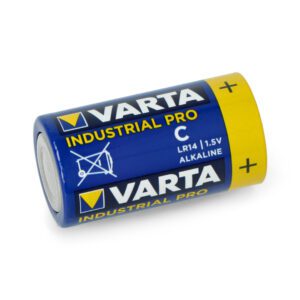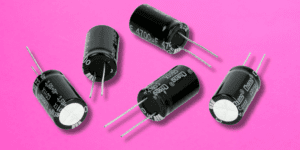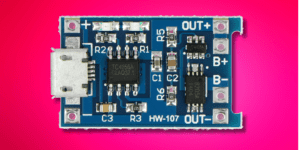Spis treści:
Batteries in the size referred to as R14 are found much less frequently than the popular AA and AAA “sticks.” Is it right? And if not, what can they be used for in electronics?
The market for electrochemical energy sources is incredibly diverse, and the multitude of types of batteries and accumulators, as well as their sizes and electrical parameters, can make your head spin. As is always the case in such cases, only a certain narrow slice of the full range of batteries is in widespread use, and the rest are used much less frequently or even not found at all in normal retail. Among the most popular batteries are, of course, “sticks” (in the size referred to as AA or R6) and their slightly smaller variety (AAA, R03), as well as 9-volt batteries, known as 6F22, and flat, lithium pastille batteries of the CR2032 type. What about batteries R14, once so popular among others. In a variety of flashlight models? Today we will exhaustively answer this question.
R14 battery designations
The battery referred to as R14 has received a number of different designations. The R14 abbreviation given earlier refers to IEC 60086-1 in its old version (pre-1990).
An update to this international standard has turned the formerly used way of labeling disposable batteries almost “upside down” – now the correct labeling for our hero today is “R26500”. And while it’s hard to expect this much longer term to find its way into colloquial language, it’s worth keeping in the back of your mind that the “R-fourteen” used to this day is already – by industry standard – obsolete.
Hardly – the same type of battery is also sometimes called “C” or even “Baby”, although in our country it is rather difficult to meet someone who would use such terms. It is worth mentioning, however, that in addition to the R14, you may also encounter the abbreviation LR14 – although both types of batteries look identical at first glance (and, in fact, do not differ in shape and dimensions), their chemical composition, and the resulting electrical parameters, are radically different.
Alkaline and regular batteries
“Ordinary” disposable batteries is an imprecise term, although it is often used in common language. In the case of round cells with a nominal voltage of 1.5 vol ts, it applies to zinc-carbon batteries – inexpensive, but offering rather average electrical capacity and not handling loads with higher current consumption very well. Much better – though also noticeably more expensive – are alkaline batteries, on the other hand, which (to clearly distinguish them from zinc-carbon batteries) gained the aforementioned “L” prefix. Alkaline batteries have a much higher rated capacity, as well as a lower internal resistance, which translates into the ability to power consumers with higher energy consumption. What’s more, alkaline cells last longer during storage, compared to their “ordinary” counterparts of the same size.
Example parameters
The R26500 battery has a body diameter of 26.2 mm and a length of 50 mm – so it is slightly smaller than the R20 cells (R34615), which have a diameter of 34.2 mm and a length of 61.5 mm. At the same time it is worth adding that while the longitudinal dimension is usually maintained with a small tolerance, the diameter may slightly deviate from the nominal value – for example, the battery of the series LR14 series of Varta Industrial Pro has a diameter of 24.9 mm, which is 1.3 mm smaller than the standard dimension. In normal situations, however, this is of little importance, since battery baskets, as a rule, are equipped with appropriate flexible “wings” that press the battery against the base of the handle and keep it in the correct position. At the same time, the weight of the battery is relatively light, usually around 70 grams.
Much more important, however, are the electrical parameters. The nominal voltage of R34615 cells is 1.5 volts, which is exactly the same as that of other cylindrical batteries, such as small and ordinary “sticks.” The question of capacity already depends on the specific product line – for example, the previously mentioned industrial grade battery (LR14 Varta Industrial Pro) has a capacity of as much as 7800 mAh, or 7.8 amp-hours, which corresponds to about 1/10 of the capacity of a standard car battery! Remember that the electrical parameters will be completely different for rechargeable batteries of the same size, and different – for disposable batteries. As an example, here we can point to the EverActive Silver Line R14/C nickel-metal hydride (NiMH) rechargeable battery – its nominal voltage is 300 mV lower at 1.2 V, while its nominal capacity is 3500 mAh (the minimum value, declared by the manufacturer, is 3000 mAh).
When choosing batteries for a device that will operate outside typical room conditions, it is also worth paying attention to the operating temperature range of the cell in question. In the case of the professional series of the Varta brand in question, this range starts as low as -20°C and ends at +50°C.
Applications for R14 batteries
High capacity, at the cost of a rather significant size R14 batteries makes them mainly used in larger portable or stationary devices, which – due to their considerable current consumption – are not suitable for power supply with smaller batteries, such as ordinary “sticks”. Thus, R14 cells can be found, among other things, in rad ios (including so-called construction radios), wireless intercoms, tourist air pumps, bubble makers, flashlights, or various toys with high energy consumption (washing machines, vacuum cleaners, kitchen mixers, cars, etc.). Interestingly, even some measuring devices use this type of cell – an example is the laboratory universal meter UT801 of the well-known UNI-T brand, which in conditions of lack of mains power supply can work when connected to eight R14 batteries. It’s also worth keeping in mind that our hero today is great for powering a variety of DIY projects – there are even special ones available for sale baskets (if you’re looking for
accessories for batteries, be sure to check out the Botland store’s category: Tools & Power → Power → Battery Accessories).
How useful was this post?
Click on a star to rate it!
Average rating 5 / 5. Vote count: 1
No votes so far! Be the first to rate this post.







